
Roots
Consider, for a moment, the crown, not just as a royal adornment, but as the living landscape of our heritage ❉ our hair. For Black and mixed-race communities, hair has always been a profound source of identity, a visual record of ancestral journeys, wisdom, and resilience. To truly understand its care, one must travel back through the currents of time, to ancient African civilizations where hair was not merely a physical feature. It served as a cosmic antenna, a map of social standing, a spiritual conduit, and a marker of tribal belonging.
The tools employed for its tending were far from simple implements; they were extensions of these deep, nuanced philosophies. Their designs, their very substance, whispered stories of the hands that carved them and the wisdom they held.
The design of ancient African hair tools mirrored an intuitive, sophisticated understanding of textured hair, long before modern science gave it a name. The unique helical structure of coily hair, its inherent strength, and its inclination to curl, were not seen as challenges. Instead, they were embraced as natural qualities to be honored and supported. Tools were crafted to work with these natural formations, rather than against them, reflecting a core philosophy of harmony with the self and the natural world.
Ancient African hair tools were crafted as extensions of a profound philosophy, honoring textured hair’s inherent nature.
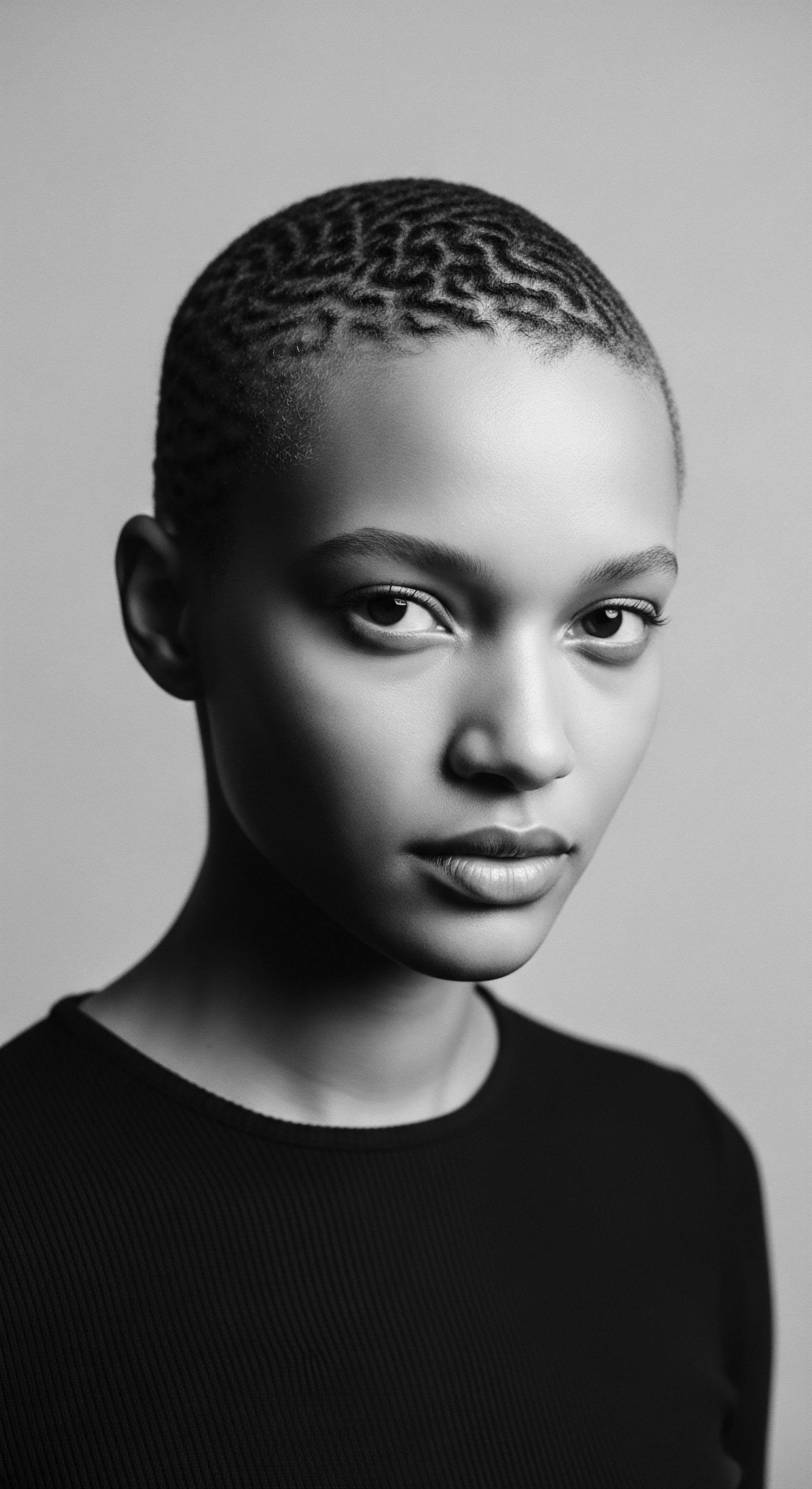
Hair Anatomy and Ancestral Wisdom
Textured hair, with its elliptical follicle and varying curl patterns, possesses a unique biology. In ancient African societies, this distinctiveness was recognized and respected. The very notion of “hair care” was interwoven with an understanding of how to maintain the health and vitality of these curls and coils. This ancestral knowledge, passed through generations, informed the creation of tools.
They were not merely instruments of styling. They served as vital partners in preserving the integrity of each strand, from root to tip. The wide-toothed combs, for instance, spoke to an understanding of preventing breakage on hair prone to tangling.
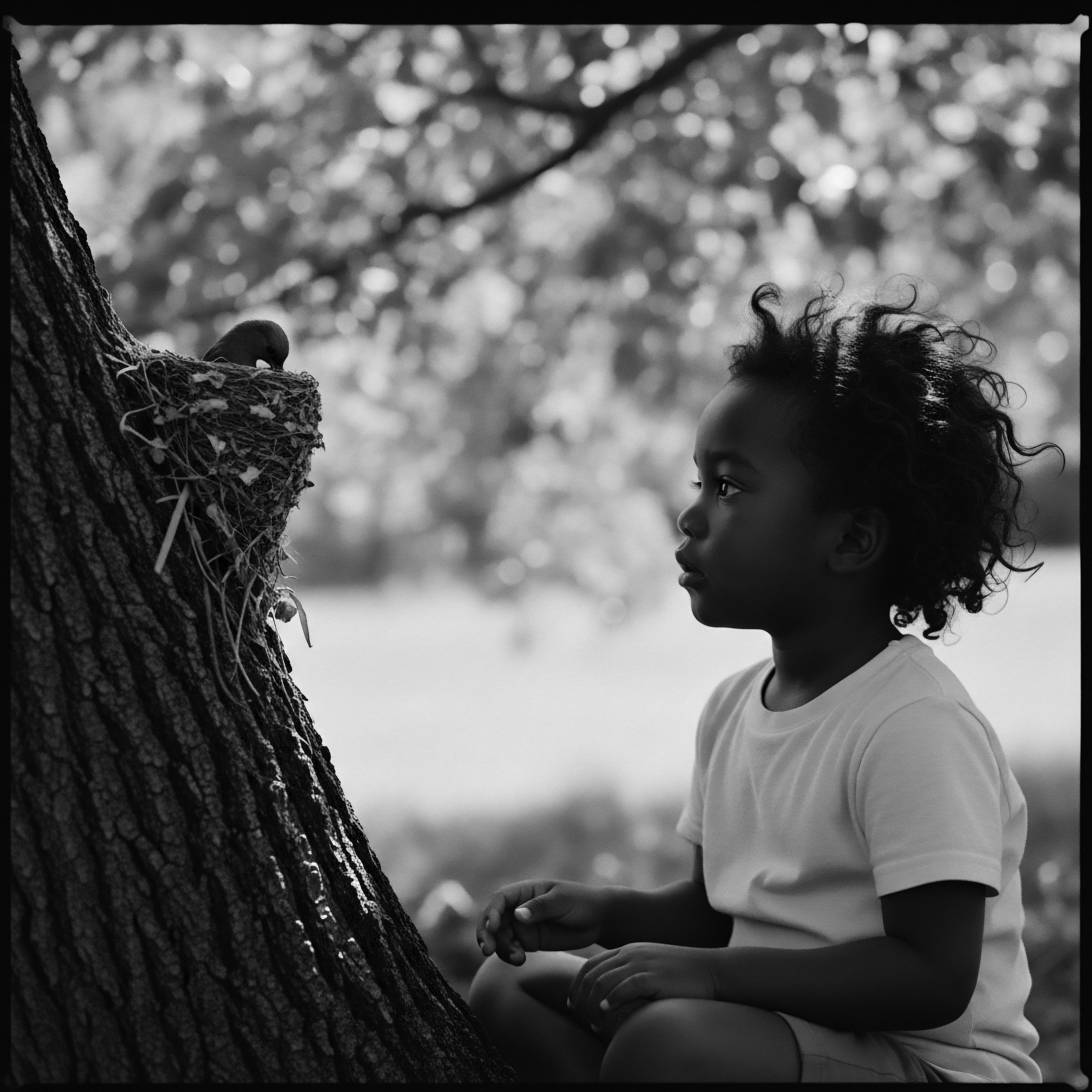
Early Material Choices and Their Messages
The earliest known hair combs, dating back over 5,500 years and some even 7,000 years, were unearthed in regions that are now Sudan and Egypt, once known as Kush and Kemet. These ancient artifacts, often found in burials, suggest that hair and its grooming tools held sacred importance, accompanying individuals into the afterlife. The materials chosen for these implements were deeply significant.
- Wood ❉ Often sourced locally, wood offered a natural warmth and flexibility. Its grain could be polished smooth to glide through hair with minimal resistance, a gentle approach reflecting respect for the hair’s delicate nature.
- Bone ❉ Animal bones, a byproduct of sustenance, were repurposed into durable combs. This practice spoke to a philosophy of resourcefulness and a deep connection to the environment.
- Ivory ❉ Particularly hippopotamus ivory, found in archaeological sites from Kemet, signified status and aesthetic appreciation. The use of such a precious material on a functional object elevated hair care to an art form, a reflection of the individual’s standing and cultural values.
The choices of material underscored a connection to nature and a belief in the inherent power of natural elements to contribute to well-being. These tools were fashioned not just for utility, but with an eye toward their interaction with the living, breathing crown they were meant to adorn. The philosophical underpinnings were clear ❉ the hair, as a conduit to spirituality and identity, deserved instruments crafted with reverence and mindful purpose.

Archaeological Revelations on Ancient Combs
Archaeological findings from Kemet provide compelling evidence of sophisticated tool design. Many of these combs, dating back millennia, possessed long, wide teeth—a characteristic uniquely suited to detangling and styling the density and coil patterns of textured hair. These wide spaces between the teeth, observed in combs from roughly 4,000 years ago, suggest a deliberate design choice, recognizing that such hair could be susceptible to breakage if handled with too much tension. This practical consideration speaks volumes about the detailed knowledge of hair structure held by these ancient communities.
Furthermore, these ancient combs were not unadorned. They frequently carried Hand-Carved Symbols ❉ birds, bulls’ horns, even human figures. Such iconography transcended mere decoration. They acted as visual mnemonics for tribal identity, social rank, fertility, and spiritual protection.
These symbols were a public declaration, worn within the hair, allowing the tools themselves to communicate the wearer’s place within the community and connection to cosmic forces. The tool became a part of the hair’s own narrative, an extension of its symbolism.
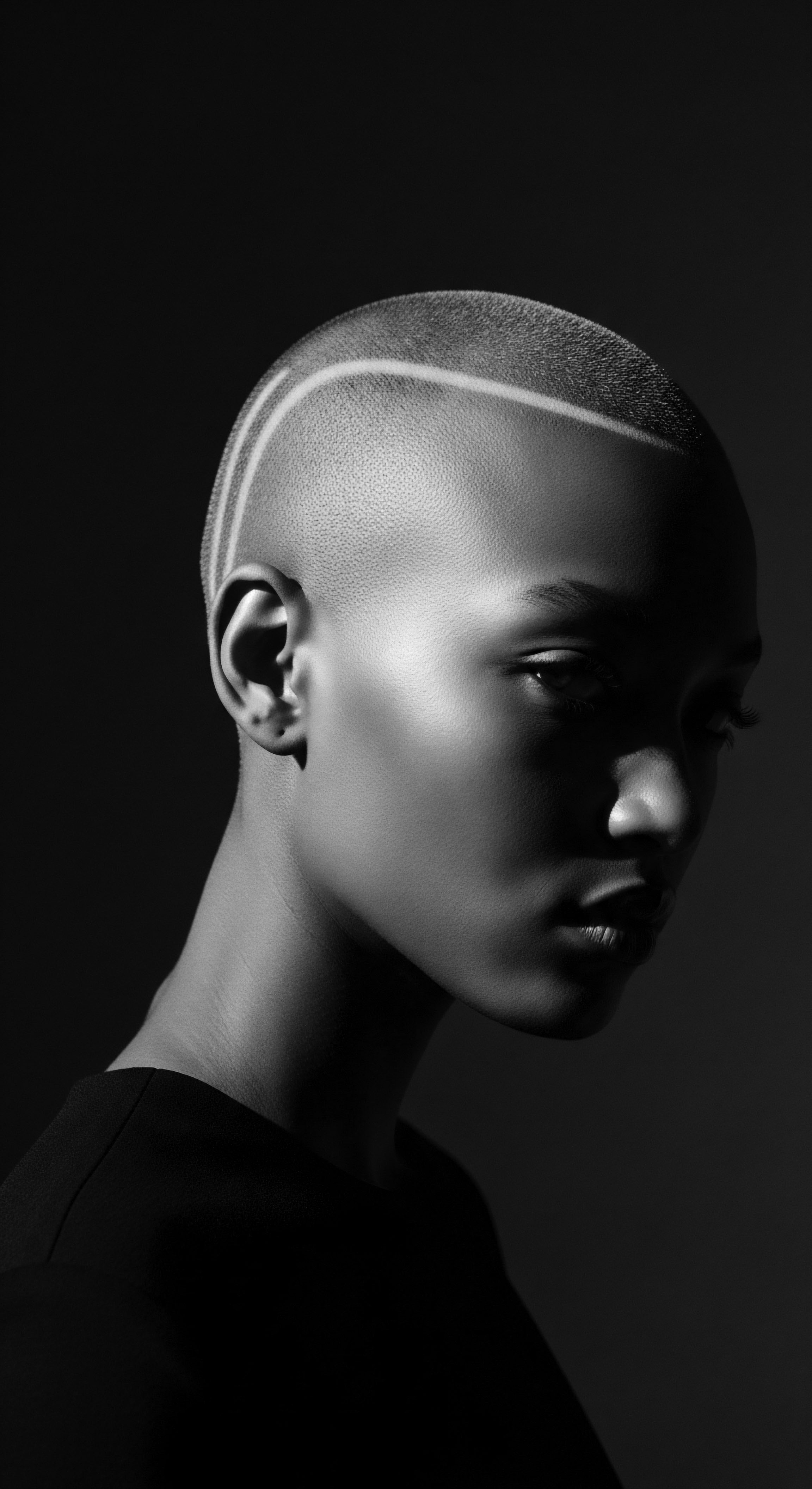
Ritual
The tending of hair in ancient Africa was seldom a solitary act. It was a communal ritual, a shared space where knowledge was passed, bonds were strengthened, and the very fabric of community was woven strand by strand. The design of hair tools was inextricably linked to this social function, facilitating lengthy, intimate sessions of grooming and adornment. Imagine the quiet rhythm of fingers and specialized tools, moving together, creating intricate patterns that were as much a statement of identity as they were works of art.
This collaborative approach to hair care meant tools needed to be ergonomic for both the giver and receiver of the styling. They were designed for repeated, often prolonged use, hinting at their durability and comfort in hand. The very act of preparing hair, which could stretch for hours or even days, underscored the deep cultural significance attached to hairstyles. They were not fleeting fashions, but carefully constructed expressions of self and community, with tools acting as conduits for this meticulous work.
The communal tending of hair in ancient Africa transformed tool design into a social language.
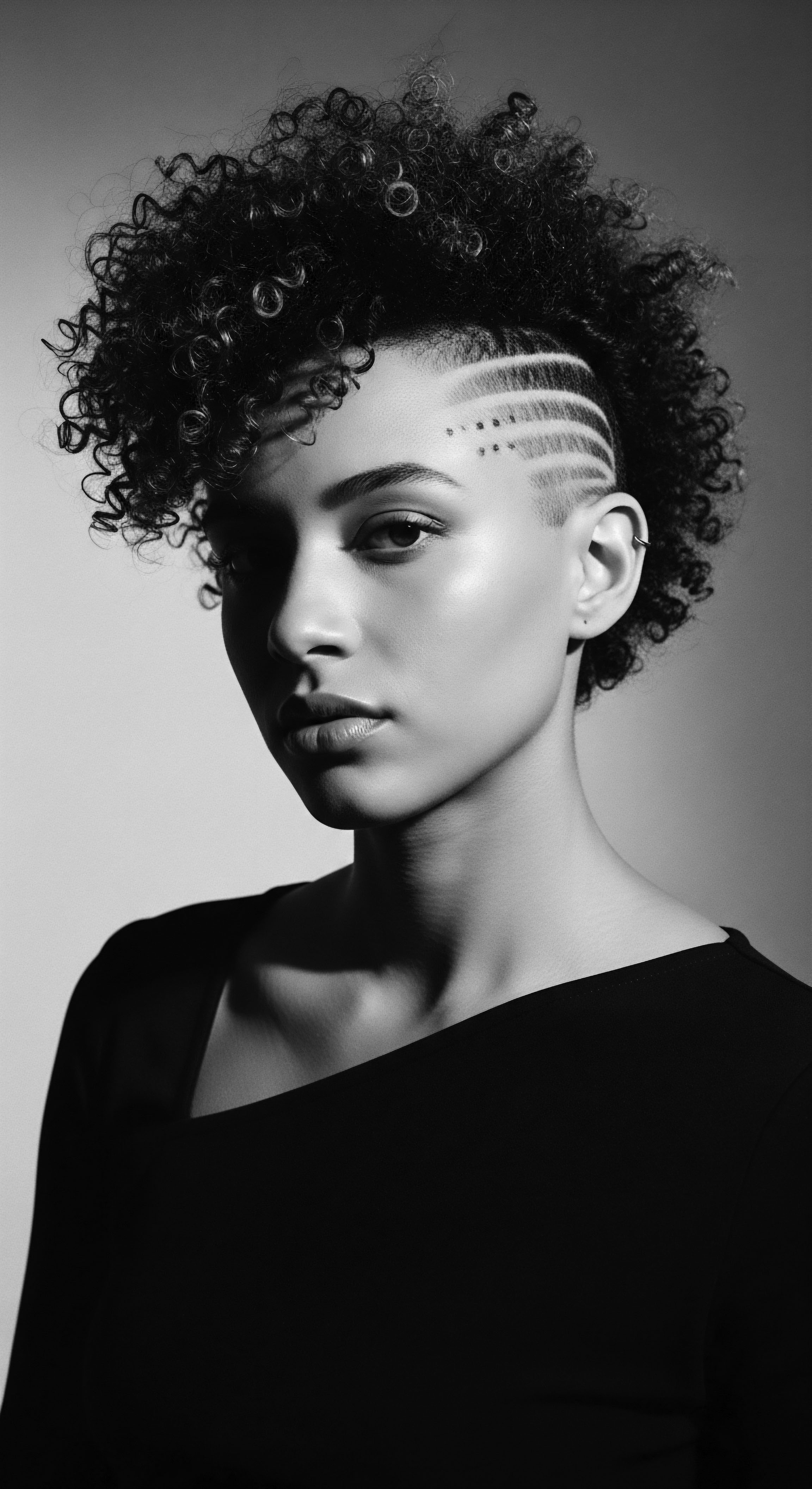
What Stories Did the Very Form of Ancient Combs Tell?
The design elements of tools served as silent storytellers. Beyond their practical purpose, they bore witness to the wearer’s journey, social standing, and spiritual worldview. Combs, picks, and pins were not mass-produced commodities; they were often bespoke pieces, reflecting regional aesthetics and personal significance. A comb’s length, the spacing of its teeth, its handle, or even its decorative elements, communicated specific messages within the broader cultural lexicon.
For instance, the presence of certain animal motifs on a comb might signify a connection to a particular clan’s totem, or a belief in the protective qualities of that animal’s spirit. The symbolism was not static; it adapted to context. A comb might signify a warrior’s readiness for battle in one community, while in another, it could symbolize a woman’s marital status or a new stage of life.
Consider the Yorùbá people of Nigeria, whose intricate hairstyles were profound expressions of community roles. Their tools would have been fashioned to support these precise styles, perhaps incorporating design elements that resonated with Yorùbá cosmology. The Fulani People of West Africa, renowned for their distinctive braids adorned with cowrie shells and beads, used tools that allowed for the delicate attachment of such embellishments, further grounding their styles in deep historical and spiritual meaning. These tools were not mere accessories; they were integral to the visual language of the hair.

Techniques and Their Instruments
A diverse array of techniques was employed in ancient African hair care, each requiring specialized tools.
- Braiding and Plaiting ❉ From tight cornrows to individual plaits, braiding was a prevalent and highly skilled practice across the continent, with some origins dating back 5,000 years. While often done with fingers, fine braiding might have involved small pointed tools to section and manipulate hair. The ability of a comb to create clean, precise parts was paramount for intricate patterns.
- Coiling and Twisting ❉ Creating uniform coils or two-strand twists often required combs with specific tooth spacing for effective separation and definition. The goal was to enhance the natural curl pattern, not disrupt it.
- Adornment Application ❉ Hair was frequently adorned with beads, shells, cowries, precious metals, and even plant fibers or animal hair. Specialized tools, like thin needles or hooks, would have been necessary to thread beads onto braids or attach other embellishments securely, reflecting the cultural value placed on intricate decoration and communication through hair.
The communal nature of hair grooming further cemented the significance of these tools. It was a time for storytelling, for sharing wisdom, and for reinforcing social bonds. The tools themselves, handled by multiple generations within these sacred spaces, became repositories of shared history, absorbing the intentions and energies of those who wielded them. The care they enabled extended beyond physical appearance; it sustained the spiritual well-being of the individual and the collective.
| Tool Type Wide-Tooth Comb/Pick |
| Common Materials Wood, Bone, Ivory |
| Philosophical Reflection in Design Designed for gentle detangling, minimizing breakage on coily textures, reflecting respect for hair health. Often adorned with symbols of status or spiritual connection. |
| Tool Type Styling Pins/Picks |
| Common Materials Bone, Metal, Carved Wood |
| Philosophical Reflection in Design Used for precise sectioning and securing complex styles, indicating the high value placed on neatness and artful presentation. Could also serve as direct decorative elements. |
| Tool Type Adornment Tools |
| Common Materials Thin needles, Hooks |
| Philosophical Reflection in Design Facilitated the attachment of beads, shells, and precious metals, underscoring hair as a canvas for social communication and wealth display. |
| Tool Type These tools, from the practical to the highly decorative, demonstrate a continuity of purpose rooted in ancient African hair philosophies. |

Relay
The ancient African approach to hair care was a deeply holistic undertaking, where the physical well-being of the hair was inseparable from spiritual harmony, social identity, and communal health. Tool design was an extension of this integrated philosophy, supporting practices that aimed for overall vitality, not merely superficial appearance. The implements used for hair reflected an understanding of long-term care and the interconnectedness of the self with the environment.
Ancestral wellness philosophies taught that hair, situated at the body’s highest point, served as a sensitive antenna, connecting individuals to ancestral wisdom and spiritual realms. Therefore, tools were designed to facilitate gentle handling, minimizing damage and preserving this vital connection. They were employed in rituals that promoted not just physical cleanliness, but also energetic clarity.
Ancient African hair tools transcended mere function, acting as instruments for holistic well-being and spiritual connection.
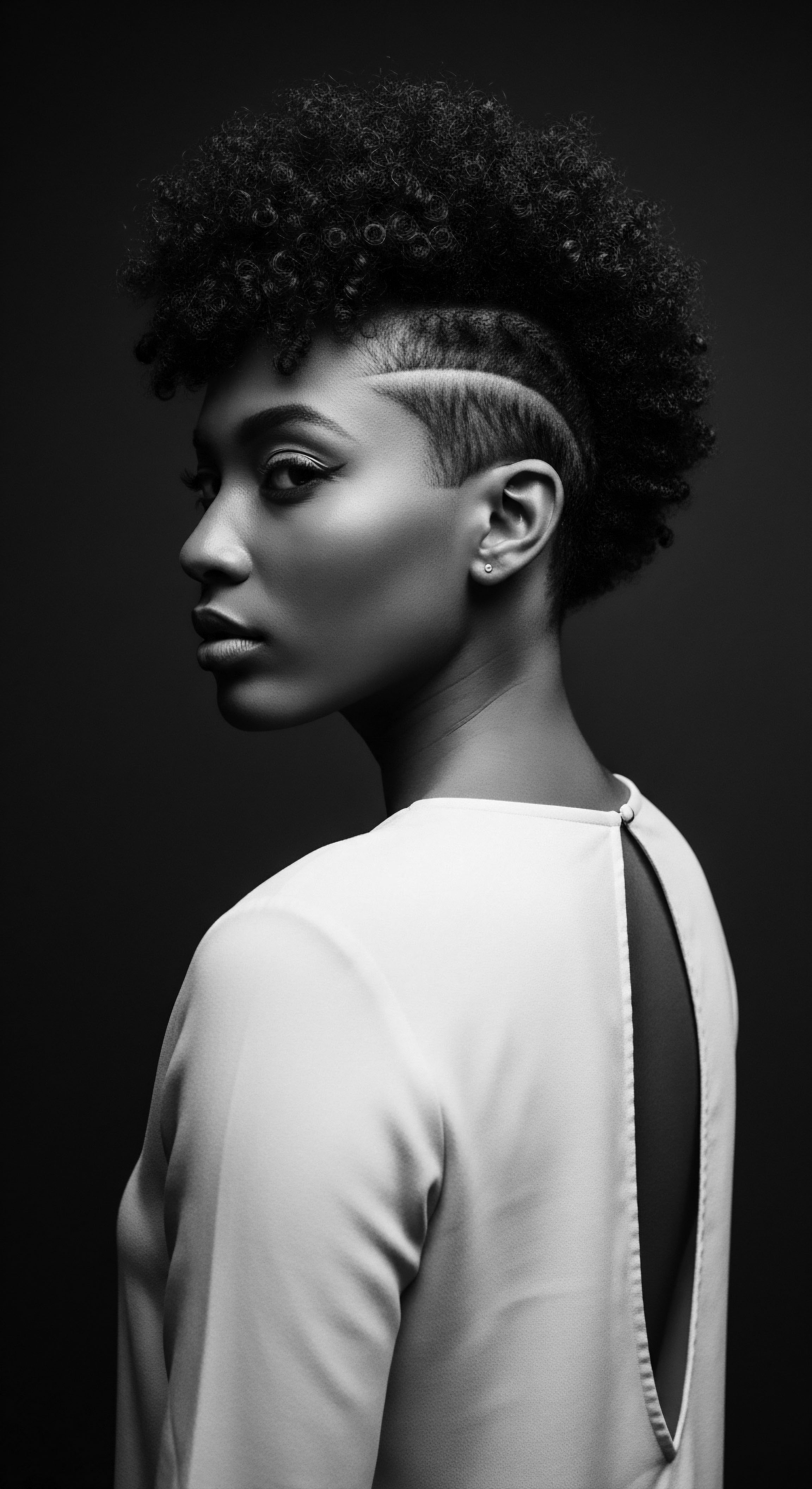
How Did Tools Support Hair Health and Spiritual Connection?
Beyond styling, many tools were used for scalp stimulation and the application of natural concoctions. Smooth, rounded edges on combs and picks, for example, were ideal for massaging the scalp, encouraging circulation—a practice understood to support hair growth and vitality long before modern scientific validation. These tools were designed to distribute natural oils, butters, and herbal preparations, ensuring moisture retention and scalp health, reflecting an ancient understanding of what textured hair requires to flourish.
The very act of using these tools in conjunction with traditional remedies was a form of mindful self-care, a ritual that calmed the spirit and strengthened the body. This holistic approach, wherein tools were carefully selected and used for wellness, speaks to a philosophy that honored the entire being, not just the visible strands.

The Unimaginable Loss and Resilience
The transatlantic slave trade represented a brutal rupture in this long-standing heritage of hair care. Enslaved Africans were often subjected to forced head shaving, a deliberate act of dehumanization aimed at stripping them of their cultural identity and severing their connection to ancestral lineage. In this new, oppressive environment, access to traditional tools—the carefully carved combs, the adornments, the natural ingredients—was severely curtailed or nonexistent.
Yet, the philosophy of care and the desire to preserve identity persisted. This period highlights the profound impact of tool design, or its absence, on hair practices. Lacking their traditional combs, enslaved people ingeniously adapted. They used whatever was available ❉ Sheep Fleece Carding Tools, forks, or even sharpened sticks.
While these improvised tools were often harsh and caused scalp irritation, lice, or ringworm, their use underscores the enduring human need to maintain cultural practices and self-worth, even under the most harrowing conditions. This period of forced adaptation illuminates, by contrast, the thoughtful and purpose-driven design of the tools that had been lost. It shows that even without the original instruments, the philosophy of care and the desire for connection to heritage remained.

Can Modern Practices Truly Reconnect with Ancestral Tooling Traditions?
Today, a global movement for natural hair sees a powerful resurgence of interest in ancestral hair care practices. Modern tools, while often manufactured differently, echo the design principles of their ancient predecessors. Wide-toothed combs, detangling brushes with flexible bristles, and accessories that protect delicate strands mirror the ancestral understanding of what best serves textured hair.
This current reconnection is a testament to the enduring wisdom encoded in ancient African hair care philosophies. It confirms that the knowledge of how to care for textured hair, informed by centuries of observation and ritual, continues to guide contemporary practices. The evolution of tool design, from hand-carved wood to modern plastics, reflects not a departure from the past, but a continuation of a heritage that celebrates the unique resilience and beauty of textured hair. This journey of understanding allows for a richer appreciation of how ancestral ingenuity laid the groundwork for today’s conscious hair care practices.
- Wide-Tooth Combs ❉ A direct lineage from ancient African picks, these remain vital for detangling coils with minimal stress.
- Protective Styling Accessories ❉ Modern bonnets and wraps carry forward the tradition of protecting hair during rest, a practice with ancient roots.
- Natural Hair Brushes ❉ Designs that separate strands gently, without harsh pulling, reflect the ancestral aim of preserving hair integrity.
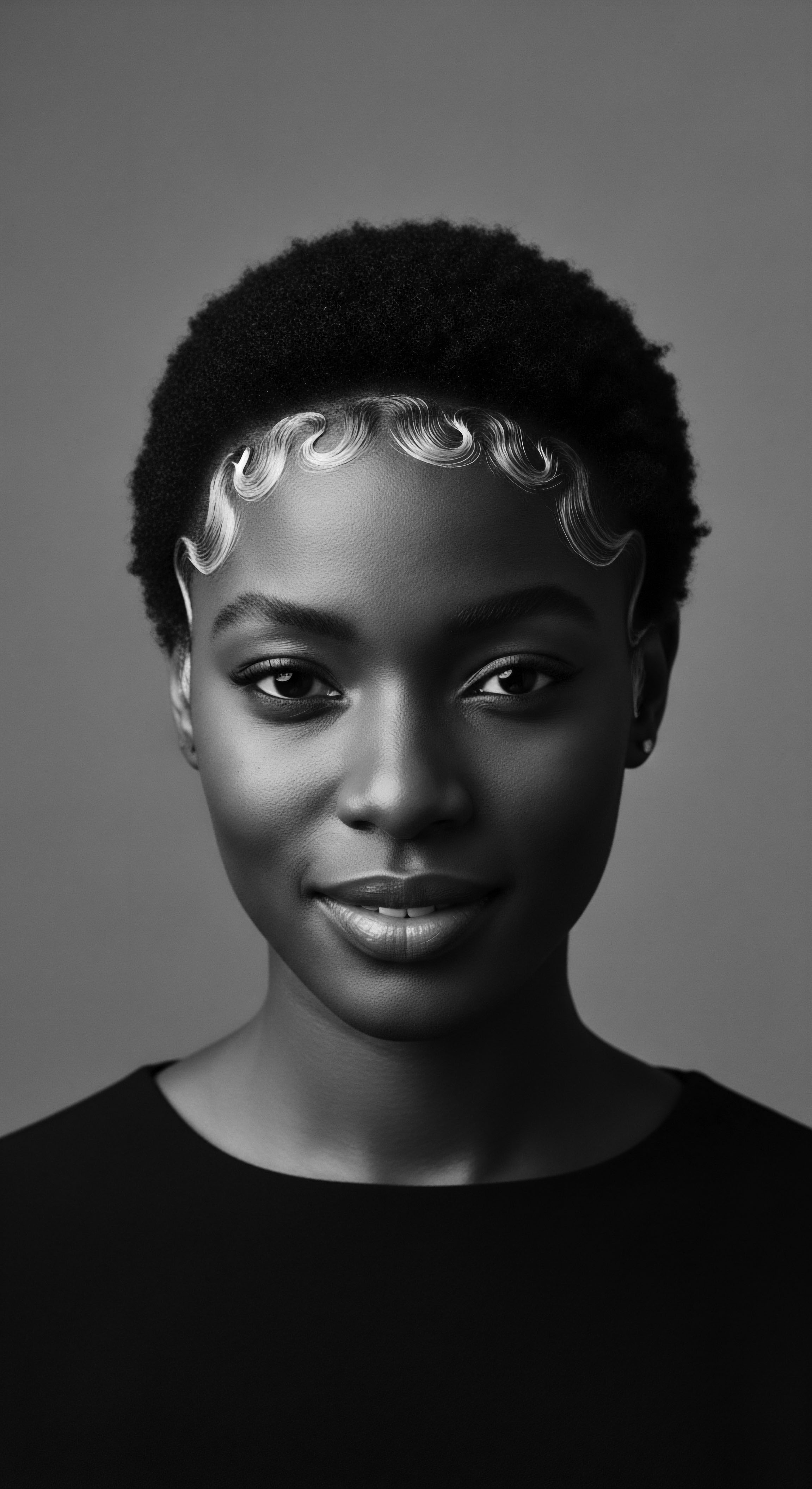
Reflection
The journey through ancient African hair care philosophies, viewed through the lens of tool design, reveals a profound, enduring heritage. These implements, far from being mere functional objects, were sacred extensions of a worldview that understood hair as a living archive—a symbol of identity, spiritual connection, and communal belonging. Each curve, each widely spaced tooth, each decorative carving on an ancient comb speaks to a deeply ingrained respect for textured hair’s unique qualities and its powerful role in human experience. The ingenuity of these early designs laid the groundwork for a lineage of care that has survived displacement, cultural erasure, and attempts at conformity.
As we stand today, appreciating the intricate coils and resilient strands, we hear the echoes of ancestral hands, feel the wisdom embedded in their tools, and understand that the soul of a strand carries not just biology, but the profound legacy of an entire continent. This is a story that continues to unfold, a vibrant, living library of traditions that affirm the beauty and power of our textured hair heritage.

References
- Ayana D. Byrd, Lori L. Tharps. Hair Story ❉ Untangling the Roots of Black Hair in America. St. Martin’s Press, 2001.
- Chimbiri, Kandace. The Story of Afro Hair. CSEP, 2021.
- Ellington, Tameka, and Joseph L. Underwood. Textures ❉ The History and Art of Black Hair. Hirmer Verlag GmbH, 2023.
- Gabana, Catherine M. C. The Social Life of Hair ❉ African Hairstyles as Cultural Expressions. 2024.
- Omotos, Adetutu. “The Cultural and Social Significance of Hair in Ancient African Civilizations.” Journal of Pan African Studies, 2018.
- Oforiwa, Alice. “The History and Culture of African Natural Hair ❉ From Ancient Times to Modern Trends.” AMAKA Studio, 2023.
- Shaw, Thurston. Igbo-Ukwu ❉ An Account of Archaeological Discoveries in Eastern Nigeria. Northwestern University Press, 1970. (Indirectly relevant for West African archaeology and tools)
- Williams, Alisha N. Black Hair, Textures, Cultural Meanings, and Social Implications. 2024.
